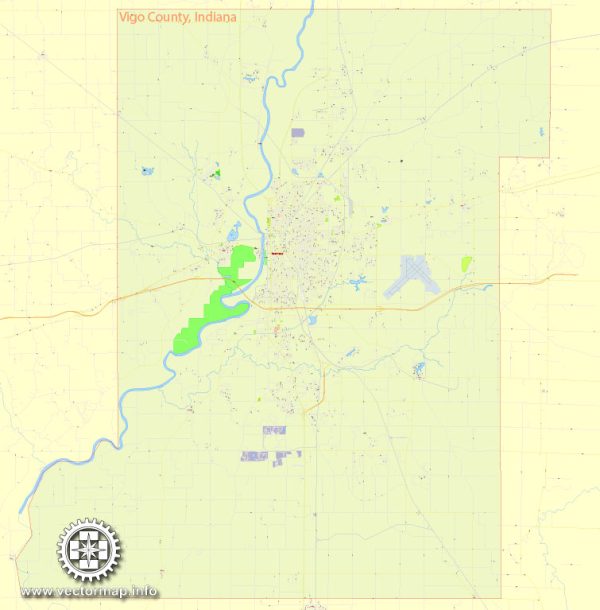Vigo County, with its largest city being Terre Haute, Indiana, has a history of urban development that reflects its role as a transportation hub, an industrial center, and an educational community. Here’s an overview of the history of urban development in Vigo County and Terre Haute:
Terre Haute:
- Early Settlement and Frontier Era:
- Terre Haute was founded in 1816, and its early development was influenced by its location on the Wabash River. The city grew as a trading post and a hub for westward expansion during the frontier era.
- Transportation Hub (19th Century):
- The city’s strategic location at the crossroads of major transportation routes, including the Wabash and Erie Canal and later the railroads, contributed to its economic growth. Terre Haute became a vital transportation hub for the movement of goods and people.
- Industrialization and Economy (Late 19th – Early 20th Centuries):
- Terre Haute experienced industrialization in the late 19th century, with industries such as coal mining, manufacturing, and the production of iron and steel contributing to the local economy.
- The city became known as a major center for pork processing, earning it the nickname “Porkopolis.”
- Higher Education and Cultural Institutions:
- Terre Haute developed a strong educational presence with the establishment of Indiana State University in 1865. The city also became home to cultural institutions, including the Sheldon Swope Art Museum and the Terre Haute Symphony Orchestra.
- Labor Movements and Social Activism (20th Century):
- Terre Haute played a role in labor movements, with unions advocating for workers’ rights. The city also saw activism during the Civil Rights Movement, with figures like Eugene V. Debs, a prominent labor leader and political activist.
- World War II and Post-War Period:
- During World War II, Terre Haute contributed to the war effort through manufacturing and military support. The post-war period saw economic and population growth.
- Higher Education Expansion (Mid-20th Century):
- Indiana State University expanded its programs and facilities, becoming a major educational institution. The city’s identity as an educational and cultural center continued to evolve.
- Economic Challenges and Revitalization Efforts (Late 20th Century – Present):
- Like many industrial cities, Terre Haute faced economic challenges in the latter half of the 20th century. The closure of some industrial plants led to efforts for economic diversification and downtown revitalization.
- Technology and Healthcare Sectors:
- In recent years, Terre Haute has seen growth in the technology and healthcare sectors. Efforts have been made to attract new businesses and promote innovation.
Vigo County:
- Settlement and Pioneer Era:
- Vigo County was established in 1818, and its early history is intertwined with the pioneer era of westward expansion. The county developed as an agricultural community.
- Transportation Infrastructure:
- The county benefited from transportation developments, including the Wabash and Erie Canal and the railroads. These transportation links played a crucial role in the county’s economic development.
- Agriculture and Industry:
- Agriculture remained a key component of Vigo County’s economy, with a focus on corn and livestock. Industrial activities, including coal mining, brick manufacturing, and food processing, also contributed to the local economy.
- Education and Cultural Institutions:
- Vigo County has been home to various educational institutions, including Indiana State University in Terre Haute. The county has also supported cultural institutions and historical preservation efforts.
- Urban and Rural Balance:
- Vigo County’s development has maintained a balance between urban and rural areas. While Terre Haute serves as an urban center, the county’s rural areas contribute to its agricultural and natural heritage.
- Community Engagement and Civic Life:
- Civic engagement and community involvement have been important aspects of Vigo County’s development. Local organizations and community initiatives have played a role in shaping the county’s identity.
- Natural Beauty and Outdoor Recreation:
- Vigo County is known for its natural beauty, including parks, rivers, and outdoor recreational opportunities. Efforts have been made to preserve green spaces and promote sustainable development.
Vigo County and Terre Haute’s history reflects the broader patterns of American development, from frontier settlement and industrialization to the challenges and opportunities of the 21st century. The county’s blend of urban and rural characteristics contributes to its diverse and evolving identity.


 Author: Kirill Shrayber, Ph.D.
Author: Kirill Shrayber, Ph.D.